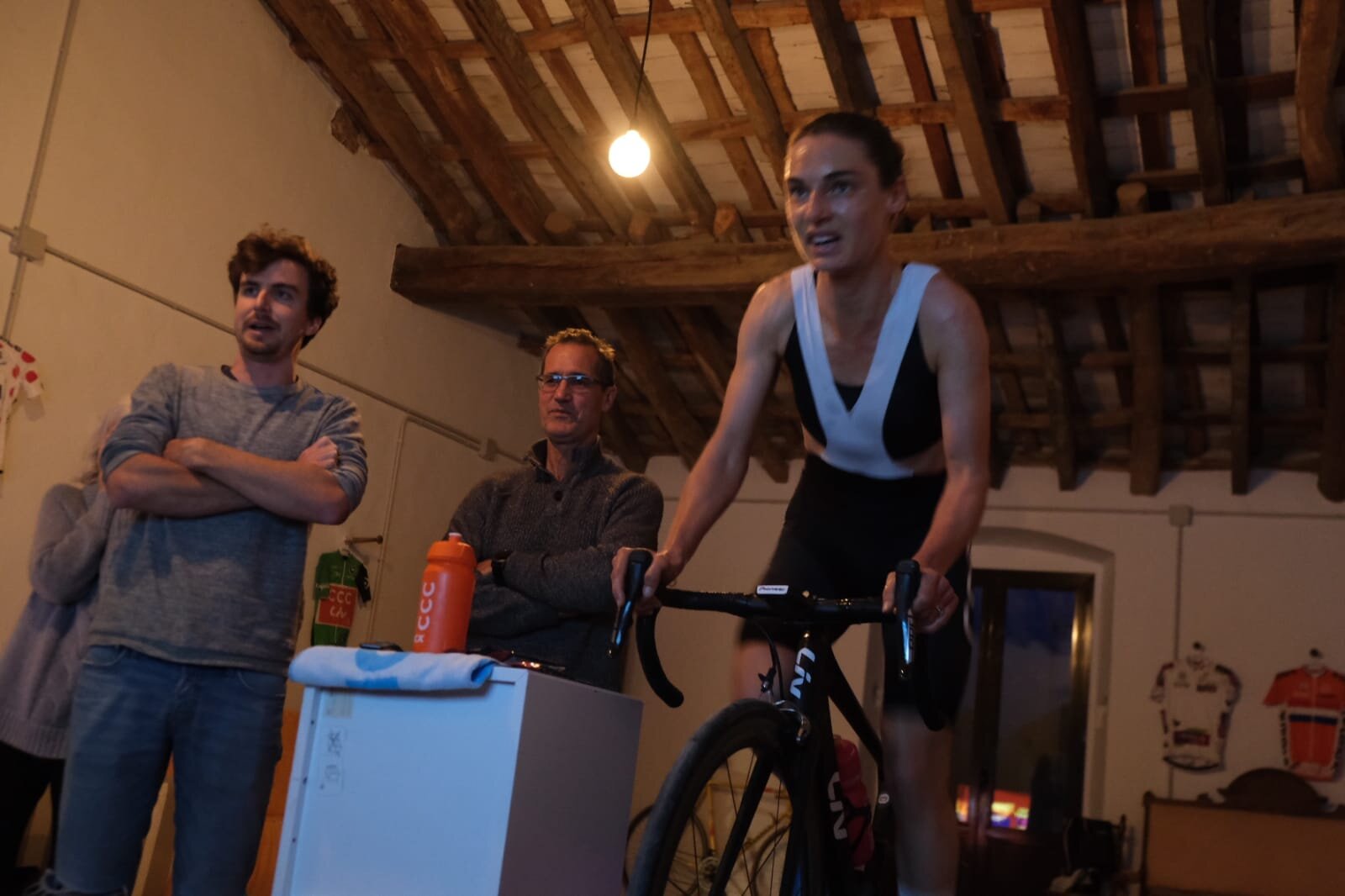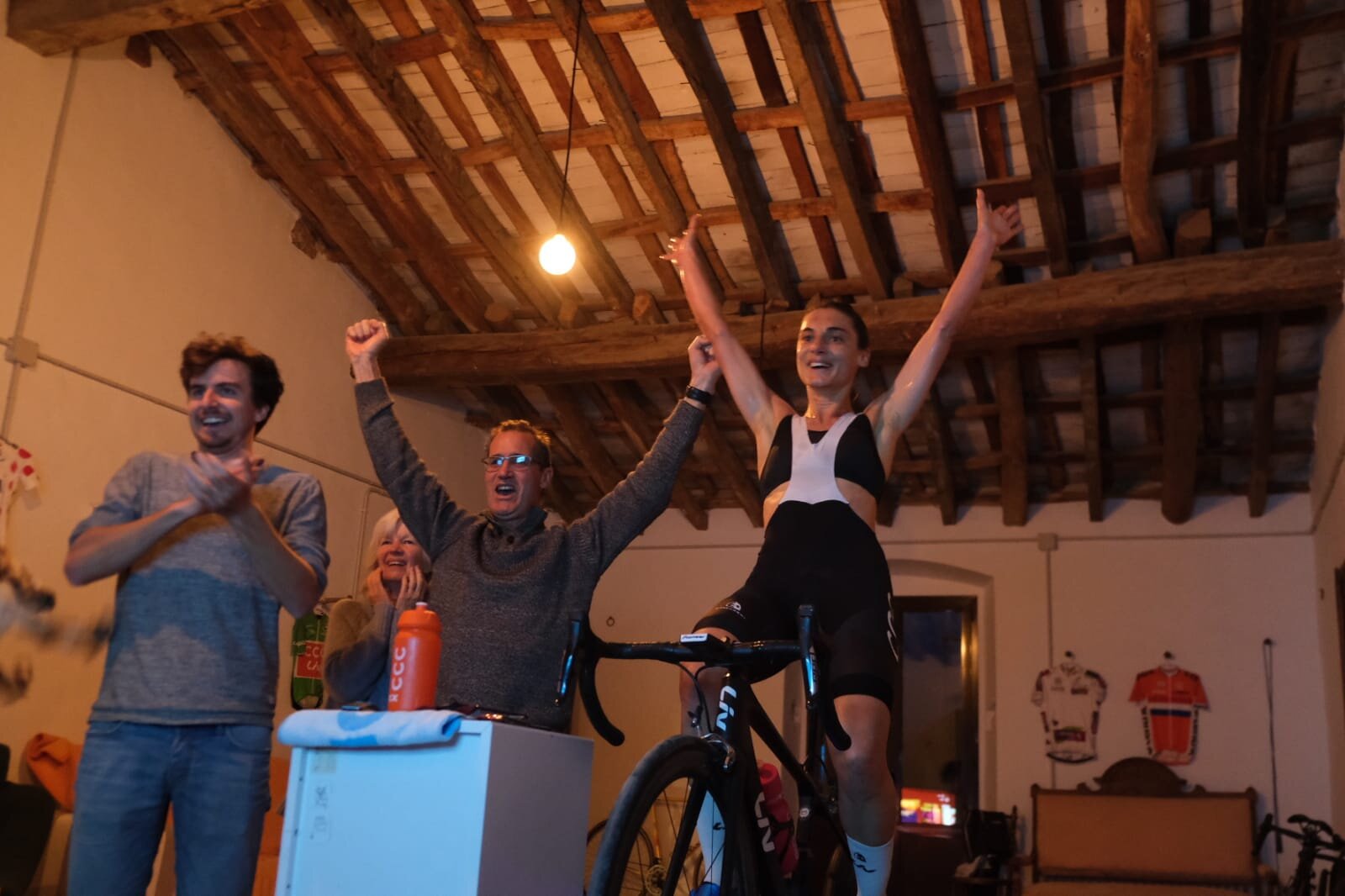The Women’s Tour of Britain: A Turning Point in the Story of Women’s Cycling
As I watched the Women’s Tour of Britain from my Zwift session at altitude, I was flooded with memories — of podium moments, of quiet years when we raced in the shadows, and of the incredible turning point this race represented for women’s cycling. From community-backed stages to the rise of the Tour de France Femmes, this is a story of how one race helped change everything.
As I sit on my Tacx trainer, spinning out a session on Zwift while at altitude, I’ve been watching the Women’s Tour of Britain unfold — and I can’t help but reflect on just how important this race has been to the evolution of women’s cycling. In many ways, it was the first event that showed us what was possible when our sport was treated with the respect and professionalism it deserves. It wasn’t just a race; it was a statement — and a catalyst for change.
For much of my early career, women’s racing felt like a well-kept secret. We poured our hearts into races that barely made it onto the radar — no live TV, only the occasional highlights package uploaded hours later, if at all. Following the sport meant refreshing Twitter feeds or trawling obscure websites. It often felt like the only people who truly followed women’s cycling were those with a direct connection to a female rider.
Even prestigious events like the Giro d’Italia Femminile were organised and marketed more like local races than elite sporting events. There was little investment in publicity, and no real strategy to draw local crowds, let alone a broader audience. We often felt like we were on our own — doing it for the love of the sport, yes, but without the infrastructure to support a real professional career path.
The Women’s Tour of Britain changed that. Introduced in 2014 by SweetSpot, it was one of the first races to take women’s cycling seriously — not just as sport, but as a product worth building, marketing, and sharing with the world. The same organisation that ran the Men’s Tour of Britain brought the same level of professionalism to the women’s race. And it showed.
Towns and communities got involved from the start, bidding to host stages, launching local campaigns, and lining the streets with schoolchildren waving flags. The organisation, the marketing, the sense of occasion — it felt like we had finally arrived. Even in the early years, when TV coverage was limited to highlight shows, the professionalism and visibility were game-changing. It was the first time I saw, in practice, what a career in this sport could look like.
Personally, finishing second overall in the 2016 edition of the Women’s Tour remains one of the proudest moments of my career. It was a turning point that gave me the confidence to keep pushing — to believe that this dream could become a sustainable, professional reality.
Of course, the COVID-19 pandemic disrupted everything. But in a strange and unexpected way, it also acted as a springboard for women’s cycling. With traditional racing halted, Zwift became the epicentre of the sport. And when ASO approached Zwift to host a virtual Tour de France in 2020, Zwift only agreed on the condition that the women’s event be treated with complete parity — equal stages, equal coverage, equal opportunity.
It was the first time the women’s peloton raced under the Tour de France name. Before that, we had La Course — a one-day event that always felt like a token offering. It began as a criterium on the Champs-Élysées, and while it later included more challenging parcours, it never received the same marketing or coverage as the men’s race.
But during that virtual Tour de France, broadcast around the world, people watched. People cared. The popularity and engagement proved what we had always known — that women’s cycling had a real audience, a real business case, and a bright future. That moment opened the door to the rebirth of the Tour de France Femmes avec Zwift, and it changed the trajectory of the sport.
Still, none of that progress would have been possible without the early pioneers. The Women’s Tour of Britain was a trailblazer — a race that led by example and showed what women’s cycling could become with the right support and belief behind it.
Which is why it’s so heartening to see the race return this year after a two-year hiatus. Sadly, SweetSpot — the original organisers who did so much to elevate this race — went into liquidation amidst the economic downturn. The future of the Women’s Tour was uncertain. But thanks to British Cycling, who recognised its value and stepped in to ensure its survival, the race is back. That act alone speaks volumes about the growing recognition of women’s cycling as something worth investing in and protecting.
And this year’s edition has already been full of emotion. My team, AG Insurance–Soudal, has been racing brilliantly, and it was great to see my teammate Kim Le Court take a fantastic stage victory in the opening stage yesterday. Unfortunately, bad luck struck during today’s stage and Kim was involved in a crash, meaning she is no longer in the leader’s jersey. But her win remains a huge moment — both for her and for the team — and a reminder of just how far we’ve come.
So here’s to the Women’s Tour of Britain. To the visionaries at SweetSpot who created it, and to British Cycling for ensuring it still has a future. To the towns, schools, volunteers, and fans who lined the streets and believed in us when it still felt like we were racing in the shadows.
And here’s to the riders — past and present — who fought for this sport when few were watching. We ride on your shoulders. And we ride with purpose, with pride, and with deep, deep gratitude.
A Zwift Victory
The countdown timer for the race to start ticked over on the screen. I sat mounted on my bike, warmed up and ready to go, completely focused. I was genuinely in race mode and, after almost a month in lockdown, that was a welcome feeling. But the unfamiliarity of e-racing was making my heart beat a little faster.
I had been invited to race the Zwift Classic Trofeo Bologna but initially I was hesitant. I’ve made a big effort to embrace Zwift since lockdown but I had been watching some of the other pro races and the power stats were intimidating. I had never done an e-race before so I also wasn’t sure how to strategize or use the power-ups. Even though I had actually raced the course in real life, this really was racing in a different world, but the newly addicted Zwift athlete in me couldn’t say no.
In the comfort of my own home, I waited for the start absolutely tingling with nerves. I hadn’t been this nervous for a race in years! When the race officially began, I over-powered the start and shot right out in front. In the peloton I was like a yo-yo. As a first-time e-racer, I didn’t have a sense of the delay between pedal power and on-screen position. I would be leading the race and then almost out the back, off the front and then instantly back to 30th. Eventually, I got the balance right and as we approached the first ascent up the Madonna di San Luca, I moved to the front and set the pace. I crested with only one other rider but we were caught at the bottom of the descent by a chase group of eight riders. By then, however, I had the hang of things.
I sat in the wheels, taking my turn on the front but also saving my legs as much as I could. In the one-day Giro dell'Emilia, we race up the Madonna di San Luca so, even though I was an avatar in a computer-generated representation, I knew exactly what to do. When the gradient screamed up on a sharp hairpin around 1 kilometer to go, I attacked. In the 2016 Giro dell'Emilia, I had come up short and finished second to Elisa Longo Borghini but that wasn’t happening today. As my family stood right next to me in the grips of excitement, cheering me on, I put down the watts and claimed the victory.
My family swarmed around to congratulate me, as did the virtual community. I knew the London Dynamo Club I often rode with on Zwift were watching from England and their messages began to pour in. I had tons of messages from riders I knew in real life and riders I had only ever “met" in Watopia. A lot of people were reaching out and, maybe it’s because of lockdown and the current situation, but the response seemed bigger than some of my real-life race wins.
The race was only 41 minutes so, even though it was around 21:00, I rode on for a long time after. The house settled back to quiet but I could feel there was lift in the atmosphere, a buzz from the race. I never imagined that Zwift would be such a big part of my life and I definitely never imagined I would be the winner of an e-race! I also never imagined that physical distancing would bring the cycling community so close together or that our sport would continue on in such a new way. Change brings uncertainty, as my racing nerves reminded me, but it also brings the hope and excitement of new opportunities and that makes my heart beat a little faster too.









